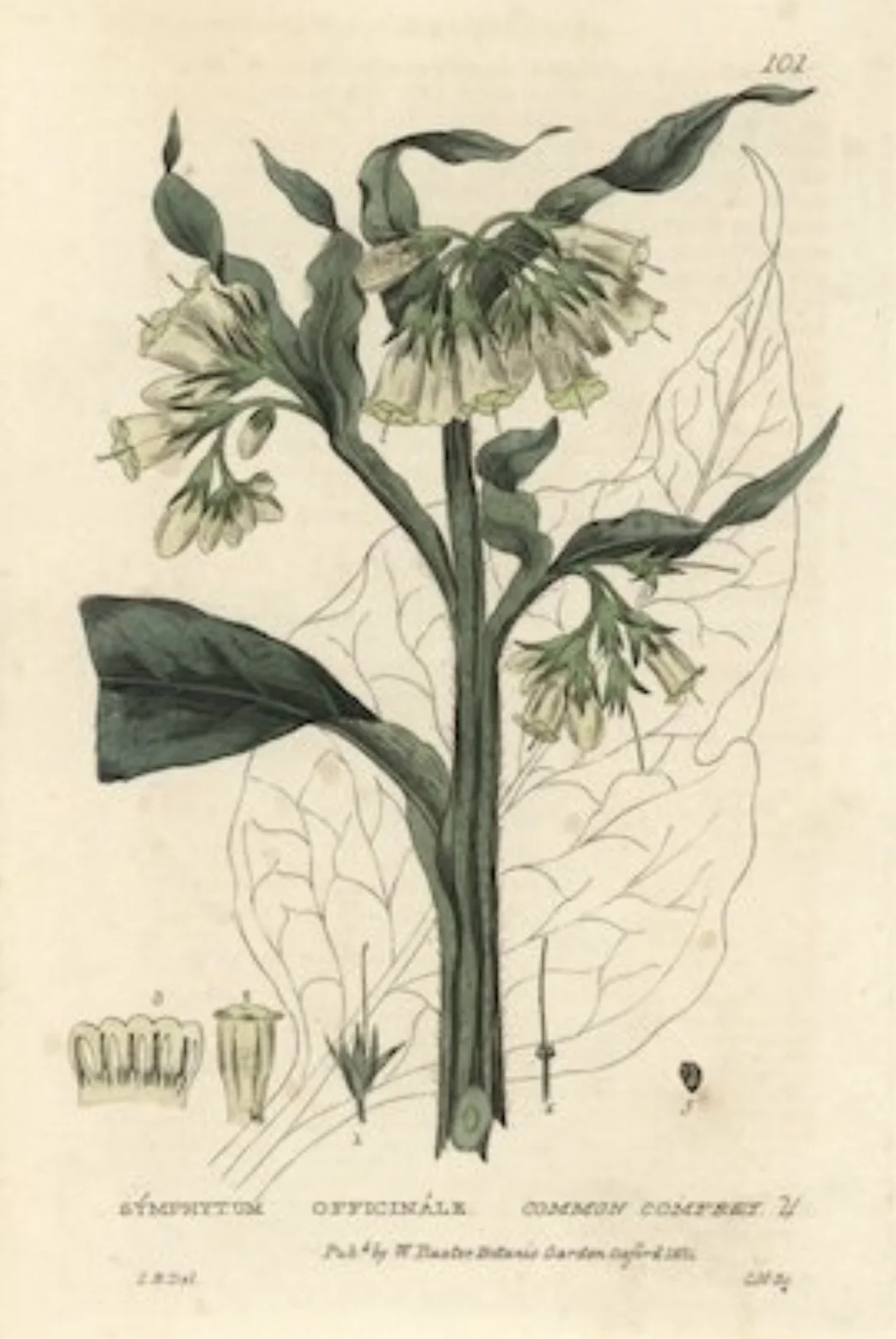Comfrey
Comfrey
COMFREY SEEDS
Symphytum officinale
Comfrey is possibly the most important plant in the garden. Its leaves contain more nitrogen, phosphorus and potash than most commercial fertilizers, and twice the potash of manure or compost. Large leaves can be used in their entirety as a mulch, brewed into an incredible liquid fertilizer, or added to the compost heap where they are an invaluable “activator".
There is one very important caveat when growing and using Comfrey in the garden: you must not allow it to set seed before harvesting the leaves. Comfrey roots are deep and tenacious, and if seeds sprout in your vegetable garden you'll very likely rue the day. Comfrey plants should be grown well away from other plants, but especially garden vegetables. Grow them in an expansive wild “hedge", along with Nettles and Yarrow, as far from the vegetable garden as possible. Comfrey is an excellent understory plant in an organic orchard. Harvest armfuls of foliage before plants go to seed. Multiple harvests may be had each season from established plants. The first harvest of leaves will be in early spring, and these are an excellent addition to the potato trench.
Plants that have set seed may still be used for liquid fertilizer: allow harvested leaves to steep in buckets of spring water for several weeks and very carefully strain the stinky liquid through the finest of fine mesh or cloth before diluting and applying to the garden.
Good hot compost may kill any viable seeds, but I wouldn't take any chances.
Comfrey seeds germinate best with some stratification: sow seeds about 1/4" deep into moist soil, pressing to keep seed snug; mist generously and wrap pot with plastic to maintain moisture; refrigerate for 4 weeks; remove from refrigeration, uncover and mist generously; cover top of pot with plastic; kept warm (65-70F) in bright light seeds should germinate in 2-4 weeks. Prick out seedlings very soon after germination and tranplant to deep 4" or even 6" pots to grow on at room temperature in bright light before transplanting outdoors after the last frost. Take care to give them plenty of room to spread by both roots and self-sowing. Avoid disturbing roots when transplanting. Water thoroughly just until established.
Historically, Comfrey had innumerable medicinal uses. Today, astute herbalists would not recommend Comfrey for anything other than external use. Comfrey has profoundly powerful healing qualities that can still be of value via external application and is very highly recommended for use in a topical ointment or to wrap closed wounds (such as sprains, strains and blunt trauma) in the field, but it is also extremely hepatotoxic and should never be used internally.
Packet contains at least 50 seeds.
